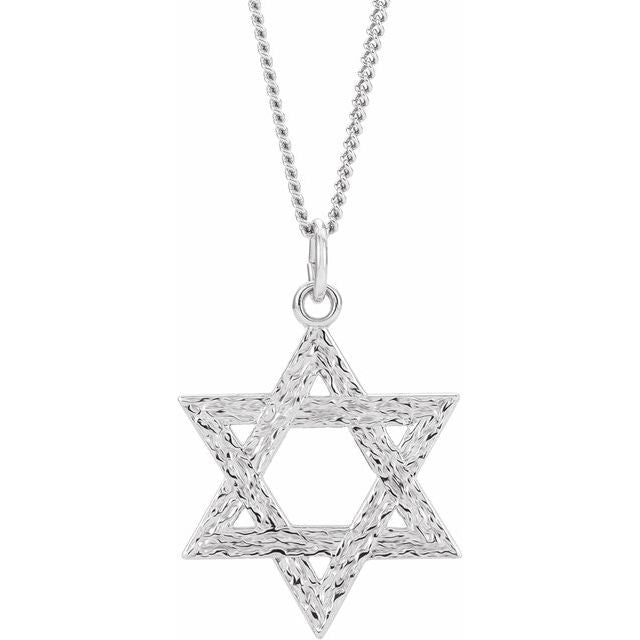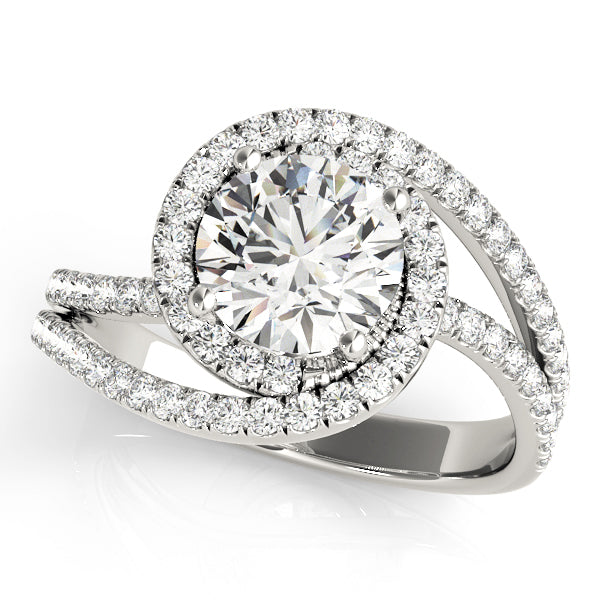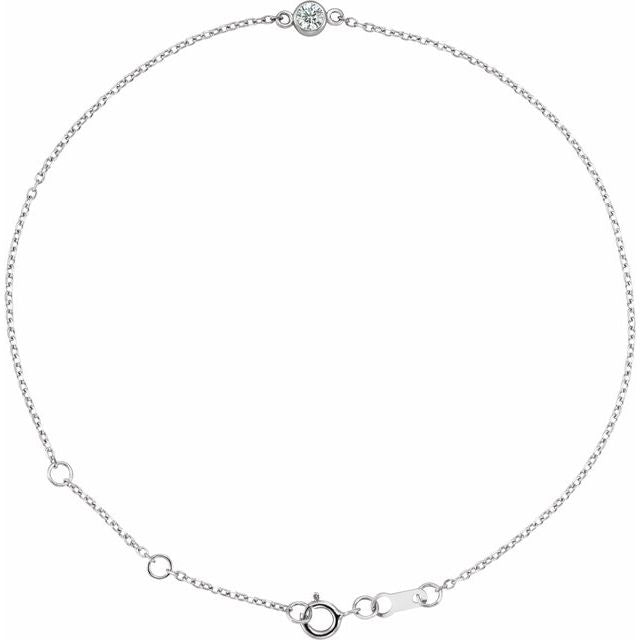Common Myths About Jewelry and the Truth Behind Them

Jewelry has adorned human bodies for millennia, serving as symbols of status, expressions of personality, and markers of significant life events. From ancient civilizations to modern fashion runways, these precious adornments have captivated our collective imagination. Yet despite jewelry's ubiquity in human culture, misconceptions about these treasured pieces abound. Whether passed down through generations or perpetuated by clever marketing, many jewelry myths have become so ingrained in our thinking that we accept them without question.
In this comprehensive exploration, we'll examine some of the most persistent myths surrounding jewelry and uncover the fascinating truths behind them. From diamond durability to the authenticity of pearls, from metal allergies to gemstone values, we'll separate fact from fiction to help you become a more informed jewelry enthusiast. Whether you're a collector, a casual wearer, or simply curious about the glittering world of jewelry, this article will provide valuable insights into the treasures we wear.

The Diamond Myth: Forever Indestructible?
Perhaps no gemstone is surrounded by more mythology than the diamond. The famous De Beers slogan "A Diamond is Forever" has cemented in our minds the idea that diamonds are virtually indestructible. While diamonds do rank a perfect 10 on the Mohs scale of mineral hardness, making them the hardest natural substance on Earth, this doesn't mean they're impervious to damage.
The truth is that hardness and toughness are different properties. Hardness refers to a material's resistance to scratching, while toughness describes its resistance to breaking. Diamonds excel in hardness but can be surprisingly vulnerable in terms of toughness. They possess what gemologists call "perfect cleavage," meaning they can split along certain planes if struck at the right angle with sufficient force.
"I've seen clients devastated after accidentally damaging a diamond they believed was indestructible," says Jennifer Reeves, a graduate gemologist with twenty years in the jewelry industry. "Diamonds can chip, crack, or even shatter if they receive a hard blow in just the right spot."
This vulnerability is well-known to jewelers and diamond cutters, who must carefully plan their cuts to minimize the risk of cleaving a stone during the cutting process. For everyday wearers, this means that while your diamond engagement ring is certainly durable, it's not invincible. Activities like gardening, home repairs, or even vigorous housecleaning can put diamonds at risk.
The practical takeaway? Remove diamond jewelry before engaging in activities that might subject it to hard impacts. And consider having your precious diamond pieces checked periodically by a professional jeweler who can identify any developing issues before they become serious problems.

The Gold Purity Conundrum: Is 24K Always Best?
When it comes to gold jewelry, many consumers operate under the assumption that higher karat equals better quality. After all, 24K gold is pure gold, so it must be superior to lower karat alternatives, right? This misconception leads many jewelry shoppers astray.
Pure 24K gold is indeed 99.9% gold with minimal trace elements. However, this purity comes with significant drawbacks for jewelry applications. Pure gold is extremely soft and malleable—so soft that it can be scratched with a fingernail and will bend easily under pressure. This makes it impractical for everyday wear, especially for items like rings and bracelets that endure constant contact and potential impacts.
"I always explain to customers that 24K gold is beautiful but impractical for most Western jewelry styles," explains Marcus Chen, a third-generation goldsmith. "In my workshop, we primarily use 14K and 18K gold alloys because they provide the perfect balance of color, durability, and value."
Gold alloys—mixtures of gold with other metals like silver, copper, zinc, or palladium—create more durable materials while maintaining gold's desirable properties. These alloys are measured in karats, with the karat number indicating the parts of gold per 24 parts total. Thus, 18K gold contains 18 parts gold and 6 parts other metals (75% gold), while 14K contains 14 parts gold and 10 parts other metals (58.3% gold).
Different cultures have different preferences for gold purity. In many Asian countries, 24K gold jewelry is traditional and highly valued despite its softness. These pieces are often designed with this softness in mind, featuring thicker, more substantial construction. In Western countries, 14K and 18K gold dominate the market, offering greater durability for everyday wear.
The composition of the alloy also affects the color of the gold. Yellow gold typically contains silver and copper; white gold includes nickel, palladium, or silver; and rose gold incorporates a higher percentage of copper to create its distinctive pinkish hue.
So rather than automatically reaching for the highest karat available, consider how and when you'll wear the piece. For everyday rings, earrings, or bracelets, 14K or 18K gold offers the best combination of beauty, durability, and value. Save the 24K pieces for special occasions or choose designs specifically created to accommodate pure gold's softness.
The Pearl Paradox: Natural vs. Cultured
Few jewelry myths are as persistent as the belief that cultured pearls are "fake" while only natural pearls are "real." This misunderstanding has led many consumers to either overpay for natural pearls or dismiss cultured pearls as artificial imitations.
The reality is far more nuanced. Both natural and cultured pearls are genuine organic gems produced by living mollusks. The difference lies in how the pearl-forming process begins.
Natural pearls form when an irritant—such as a parasite or piece of shell—accidentally enters a mollusk. As a defense mechanism, the mollusk secretes layer upon layer of nacre (a combination of aragonite and conchiolin) around the irritant, eventually forming a pearl. This process is extremely rare in nature, making natural pearls extraordinarily valuable.
Cultured pearls, by contrast, form through human intervention. Pearl farmers carefully insert a nucleus (typically a bead made from the shell of a freshwater mussel) along with a piece of mantle tissue into a host mollusk. The mollusk then deposits nacre around this nucleus, just as it would with a natural irritant. The result is a genuine pearl that has grown inside a living creature.
"The nacre of a cultured pearl is identical to that of a natural pearl," notes Dr. Elisabeth Harper, marine biologist and pearl specialist. "Under a microscope, even experts cannot distinguish between the nacre of natural and cultured pearls. The only way to tell them apart is through X-ray examination, which reveals the cultured pearl's implanted nucleus."
Mikimoto Kokichi revolutionized the pearl industry when he patented his pearl culturing technique in 1916. His innovation democratized pearl ownership, making these gems accessible to a much wider audience. Today, natural pearls are so rare that they account for less than 1% of pearls on the market. When they do appear, usually at high-end auctions, they command extraordinary prices.
So are cultured pearls "real"? Absolutely. They are genuine organic gems created by living organisms through the same biological process as natural pearls. The only difference is that humans initiated the process rather than chance. Cultured pearls still require years to form, with the mollusk depositing thousands of microscopic layers of nacre to create the finished gem.
The next time you admire a strand of lustrous pearls, remember that whether natural or cultured, each represents a remarkable collaboration between nature and time—and in the case of cultured pearls, human ingenuity as well.
The Sterling Silver Tarnish Misconception
Many jewelry enthusiasts avoid sterling silver because they believe it inevitably tarnishes and requires constant maintenance. While it's true that sterling silver can tarnish, this natural process is often misunderstood and exaggerated.
Sterling silver is an alloy containing 92.5% pure silver and 7.5% other metals (usually copper). This composition provides the necessary durability for jewelry while maintaining silver's beautiful luster. The copper component, while essential for strength, is primarily responsible for tarnish—a surface discoloration that occurs when silver reacts with sulfur compounds in the air.
"Tarnish isn't damage—it's a surface reaction that can be easily reversed," explains Sophia Martinez, a silversmith with over fifteen years of experience. "With proper care and occasional cleaning, sterling silver can maintain its beauty for generations."
Several factors affect how quickly silver tarnishes, including climate (humidity accelerates tarnish), air quality (pollution contains sulfur compounds), and how often the piece is worn. Interestingly, regular wear can actually reduce tarnishing, as the natural oils in your skin create a protective barrier against environmental elements.
Modern metallurgy has also developed solutions to minimize tarnishing. Many manufacturers now offer "anti-tarnish" or "tarnish-resistant" sterling silver that incorporates metals like germanium, silicon, or zinc in place of some or all of the copper. These alternative alloys significantly reduce tarnishing while maintaining the strength and appearance of traditional sterling silver.
For those who own traditional sterling silver, preventing and addressing tarnish is simpler than many believe. Store silver jewelry in anti-tarnish bags or cloth when not in use, keep it away from bathroom humidity, and remove it before swimming or using household chemicals. When cleaning becomes necessary, commercial silver polishes, specialized silver cleaning cloths, or even homemade solutions of baking soda and aluminum foil can quickly restore silver's luster.
Rather than avoiding this beautiful and affordable precious metal, embrace sterling silver with the knowledge that a little care goes a long way. Its versatility, affordability, and classic appeal make it a worthwhile addition to any jewelry collection.
The Birthstone Belief: Ancient Tradition or Modern Marketing?
Many people feel a special connection to their birthstone, believing these gem associations date back to biblical times or ancient civilizations. The reality behind birthstone traditions reveals a fascinating blend of ancient practices, cultural evolution, and modern marketing.
The concept of associating gems with months does have ancient roots. Historians trace the practice back to the Breastplate of Aaron described in the Book of Exodus, which contained twelve different gemstones representing the twelve tribes of Israel. However, these stones weren't initially associated with birth months or zodiac signs.
The connection between specific stones and months evolved gradually across different cultures. In 1st century Rome, people wore different gemstones each month rather than wearing their birth month stone year-round. By the 8th century, scholars began associating specific gems with calendar months, but these associations varied widely across cultures and time periods.
The "modern" birthstone list that most Americans recognize today was standardized surprisingly recently—in 1912—by the National Association of Jewelers (now known as Jewelers of America). This standardization was partly motivated by commercial interests, creating clarity for consumers and jewelers alike.
"The 1912 list was essentially a marketing strategy that helped jewelers sell more colored gemstones," explains Dr. Christopher Smith, president of the American Gemological Laboratories. "It simplified what had been a confusing array of birthstone traditions across different cultures."
Since 1912, the official birthstone list has been modified several times. Tanzanite, for example, was added as a December birthstone in 2002, while spinel became an additional August birthstone in 2016. These additions reflect both gemological discoveries and market forces.
The modern birthstone list also tends to favor transparent, faceted gemstones over opaque or cabochon-cut materials that were common in earlier traditions. This preference aligns with contemporary Western jewelry aesthetics and manufacturing techniques.
Does this commercial influence diminish the meaning of birthstones? Not necessarily. While the specific assignments may have modern origins, the human desire to find personal meaning in gemstones spans thousands of years. Whether you embrace your officially designated birthstone or prefer an alternative from an older tradition, the personal connection you feel to your special gem is what truly matters.
The Metal Allergy Myth: "I'm Allergic to All Metals Except Gold"
A common refrain among jewelry consumers is, "I can only wear gold because I'm allergic to all other metals." This statement reflects a widespread misunderstanding about metal allergies and their causes.
In reality, true metal allergies are quite specific. The vast majority of what people call "metal allergies" are actually reactions to nickel, one of the most common contact allergens. According to the American Academy of Dermatology, approximately 15-20% of people have some degree of nickel sensitivity, with women experiencing it more frequently than men.
"When patients tell me they're allergic to all metals except gold, I explain that they're likely reacting to nickel, which can be present in many metal alloys," says Dr. Rebecca Tung, a dermatologist specializing in contact dermatitis. "Pure gold rarely causes allergic reactions, but that doesn't mean other precious metals like platinum or palladium would cause problems."
The confusion stems from the widespread use of nickel in jewelry manufacturing. Nickel is often added to white gold to create its silvery appearance and is commonly found in costume jewelry due to its low cost and durability. When someone reacts to a piece of silver-colored jewelry, they might conclude they're allergic to silver itself, when the culprit is actually the nickel in the alloy.
High-karat yellow gold (18K and above) rarely contains significant amounts of nickel, which explains why many people with "metal allergies" can wear it comfortably. However, lower-karat gold alloys, particularly white gold, may contain nickel unless specifically created to be nickel-free.
For those with nickel sensitivity, several excellent alternatives exist beyond high-karat gold:
Platinum is naturally hypoallergenic and rarely causes reactions, making it ideal for sensitive individuals.
Palladium, a member of the platinum family, offers similar hypoallergenic properties at a lower price point than platinum.
Titanium is lightweight, strong, and biocompatible, making it an excellent choice for those with metal sensitivities.
Sterling silver, while it can occasionally contain trace amounts of nickel, is generally well-tolerated by most people with mild nickel sensitivity.
Stainless steel jewelry marked as "surgical grade" or "316L" has minimal nickel content and is usually safe for all but the most sensitive individuals.
If you suspect you have a metal allergy, consider consulting a dermatologist who can perform patch testing to identify your specific triggers. This knowledge will empower you to make informed jewelry choices rather than unnecessarily limiting your options.
The Gemstone Value Misconception: Rarity Equals Worth
Many consumers assume that a gemstone's value is directly proportional to its rarity—the rarer the stone, the more valuable it must be. While rarity certainly influences price, the relationship between scarcity and value in the gemstone market is far more complex.
"If rarity alone determined gemstone prices, many obscure minerals would be worth more than diamonds," explains gemologist Elena Bastos. "The reality is that gemstone valuation involves multiple factors, with market demand often outweighing geological scarcity."
Take diamonds, for example. Geologically speaking, diamonds are not particularly rare—they're actually more common than many colored gemstones. However, controlled supply, exceptional marketing, and strong cultural associations with romance and marriage have established diamonds as the most valuable mainstream gemstone.
Conversely, red beryl (also called bixbite) is thousands of times rarer than diamond, yet commands lower prices because it lacks widespread recognition and demand. Similarly, painite was once listed in the Guinness Book of World Records as the world's rarest gemstone, but few consumers recognize the name, limiting its market value despite its extreme scarcity.
Beyond rarity and demand, numerous other factors influence a gemstone's value:
Color quality is paramount for most colored stones, with vivid, saturated hues typically commanding premium prices.
Clarity affects value significantly, though standards vary by gemstone type. What's acceptable in an emerald would be considered heavily included in a diamond.
Size impacts price exponentially rather than linearly. A 2-carat sapphire typically costs more than twice as much as two 1-carat sapphires of equal quality.
Cut quality dramatically affects a gem's beauty and value, with precision cutting maximizing a stone's optical properties.
Treatment status matters increasingly to informed buyers, with untreated stones commanding significant premiums over their treated counterparts.
Origin can substantially influence price, with sapphires from Kashmir or rubies from Burma (Myanmar) commanding premiums due to their historically superior color and quality.
The gemstone market also experiences trends and fluctuations. Tanzanite prices rose dramatically after Tiffany & Co. promoted it in the 1960s. More recently, social media has driven interest in lesser-known stones like morganite and spinel, increasing their market value.
Understanding this complex valuation system helps consumers make more informed purchases. Rather than focusing exclusively on rarity, consider which qualities matter most to you personally. A less rare stone with exceptional color and cut might bring more joy than a rarer stone with mediocre attributes.
The Vintage Jewelry Myth: Old Equals Valuable
A persistent misconception in the jewelry world is that age automatically confers value—that any piece of "antique" or "vintage" jewelry must be worth more than its modern counterparts. This oversimplification leads to both disappointment for sellers and missed opportunities for buyers.
"Age is just one factor in determining a vintage piece's value," says auction specialist Martin Keller. "I've seen people devastated to learn their 100-year-old family jewelry has minimal market value, while others are shocked at the high appraisals for relatively recent designer pieces."
Several factors beyond age determine a vintage jewelry piece's value:
Designer attribution significantly impacts price. Signed pieces by renowned houses like Cartier, Tiffany & Co., or Van Cleef & Arpels command substantial premiums over similar unsigned pieces.
Craftsmanship quality varies enormously across vintage jewelry. Mass-produced items from any era generally have limited value compared to hand-crafted pieces with exceptional workmanship.
Materials matter tremendously. Many vintage pieces feature gold-filled components, paste stones, or other non-precious materials that limit their intrinsic value regardless of age.
Condition dramatically affects desirability. Damaged pieces, missing stones, or heavily worn items typically sell for fractions of their well-preserved counterparts.
Historical significance can elevate certain pieces beyond their material value. Jewelry associated with historical events, notable figures, or important design movements often commands premium prices.
Market trends influence which eras are currently fashionable. Art Deco jewelry (1920s-1930s) has maintained strong demand for decades, while Victorian pieces experience fluctuating popularity.
The misconception about vintage jewelry's value cuts both ways. Some truly valuable pieces are discarded as "old-fashioned costume jewelry" by uninformed heirs, while other pieces are preserved for generations despite having minimal market value.
For those interested in vintage jewelry, education is essential. Resources like specialized reference books, reputable online databases, and professional appraisers can help determine whether that heirloom brooch is a valuable treasure or a sentimental keepsake with modest monetary worth.
The good news for collectors is that this knowledge gap creates opportunities. Truly knowledgeable buyers can sometimes find undervalued pieces from less popular eras or by lesser-known but skilled designers. Meanwhile, those who collect primarily for aesthetic enjoyment rather than investment can find beautiful vintage pieces at reasonable prices if they focus on currently unfashionable styles or materials.
The Cleaning Conundrum: One Method Fits All?
Many jewelry owners believe that all jewelry can—and should—be cleaned the same way. This misconception leads to damaged gemstones, deteriorated metals, and diminished beauty in otherwise lovely pieces.
"I've seen irreparable damage caused by inappropriate cleaning methods," laments jewelry conservator Diane Wong. "Pearls dissolved by household cleaners, opals cracked from ultrasonic cleaners, and antique finishes stripped away by aggressive polishing—all preventable losses."
The truth is that different jewelry materials require specific cleaning approaches. What works beautifully for diamonds and platinum might destroy pearls or emeralds. Here's why one-size-fits-all cleaning advice falls short:
Gemstone hardness varies dramatically. While diamonds (Mohs 10) can withstand vigorous cleaning, softer stones like opals (Mohs 5.5-6.5) and pearls (Mohs 2.5-4.5) require gentle handling.
Porosity differences matter. Non-porous gems like diamonds and sapphires resist chemical penetration, while porous materials like turquoise, pearls, and amber can absorb cleaning solutions, causing discoloration or deterioration.
Treatments and enhancements need protection. Many gemstones undergo treatments to improve appearance—fracture-filled diamonds, oiled emeralds, or dyed pearls, for example. These enhancements can be damaged or reversed by inappropriate cleaning methods.
Setting styles present different challenges. Pavé settings with numerous small stones may trap cleaning solutions, while tension settings might be weakened by ultrasonic vibrations.
Metal compositions react differently. While platinum and high-karat gold tolerate most cleaning methods, silver can tarnish rapidly after cleaning if not properly protected, and some gold alloys may be vulnerable to certain chemicals.
Antique finishing techniques require special care. The patina on vintage pieces often contributes significantly to their character and value, yet can be easily destroyed by aggressive cleaning.
For safe and effective jewelry cleaning, consider these general guidelines:
For diamond jewelry in modern settings: Commercial jewelry cleaners, ultrasonic cleaners, or a solution of mild dish soap and warm water with a soft brush are typically safe.
For colored gemstones: Mild soap and water with a soft brush is safest for most colored stones. Avoid ultrasonic cleaners for emeralds, opals, tanzanite, and other fragile gems.
For pearls and organic gems: Wipe gently with a slightly damp, soft cloth after wearing. Never submerge in water or use any chemicals, including mild soaps.
For silver: Use specialized silver polishing cloths or dips designed specifically for jewelry (not flatware). Rinse thoroughly and dry completely after cleaning.
For antique or vintage pieces: Consult a professional jeweler or conservator before attempting to clean valuable older items.
When in doubt, the safest approach is the gentlest: a soft, slightly damp cloth to remove surface dirt, followed by thorough drying. For more thorough cleaning, consult a professional jeweler who can recommend appropriate methods for your specific pieces.
Conclusion: Beyond the Myths
As we've explored these common jewelry misconceptions, a pattern emerges: the world of jewelry is far more nuanced than conventional wisdom suggests. From the surprising vulnerability of diamonds to the unexpected value factors in vintage pieces, from the truth about metal allergies to the complexity of gemstone valuation, jewelry rewards those who look beyond simplistic myths.
This deeper understanding enhances our appreciation for these treasured objects. Knowing that cultured pearls represent a remarkable marriage of nature and human ingenuity adds to their allure rather than diminishing it. Understanding that sterling silver can be easily maintained helps us embrace this beautiful and affordable precious metal. Recognizing the complex factors that determine a gemstone's value helps us make more personally meaningful choices rather than simply following market trends.
Perhaps most importantly, dispelling these myths empowers us as consumers. Armed with accurate information, we can make more informed decisions about purchases, care, and value. We can choose jewelry that truly suits our lifestyle, preferences, and budget, rather than being guided by misconceptions or clever marketing.
The next time you admire a piece of jewelry—whether a diamond engagement ring, a strand of pearls, or a silver bracelet—you'll see beyond the surface beauty to the fascinating realities that make these adornments even more remarkable than the myths suggest.
References
American Academy of Dermatology. "Nickel Allergy: How to Avoid Exposure and Reduce Symptoms." https://www.aad.org/public/diseases/eczema/insider/nickel-allergy
Gemological Institute of America. "Diamond Durability: A Relative Matter." https://www.gia.edu/diamond-durability-hardness
International Gem Society. "Gemstone Hardness and Wearability." https://www.gemsociety.org/article/hardness-and-wearability/
Jewelers of America. "The History of Birthstones." https://www.jewelers.org/ja/education-resources/jewelry-information/birthstones
Mikimoto America. "The History of Cultured Pearls." https://mikimotoamerica.com/pages/history-of-mikimoto
The Journal of Gemmology. "Factors Affecting Gemstone Value: A Gemological Perspective." https://gem-a.com/journal-of-gemmology
The Silver Institute. "Silver Care and Cleaning." https://www.silverinstitute.org/silver-care-and-cleaning/
Victoria and Albert Museum. "A History of Jewellery." https://www.vam.ac.uk/collections/jewellery





















